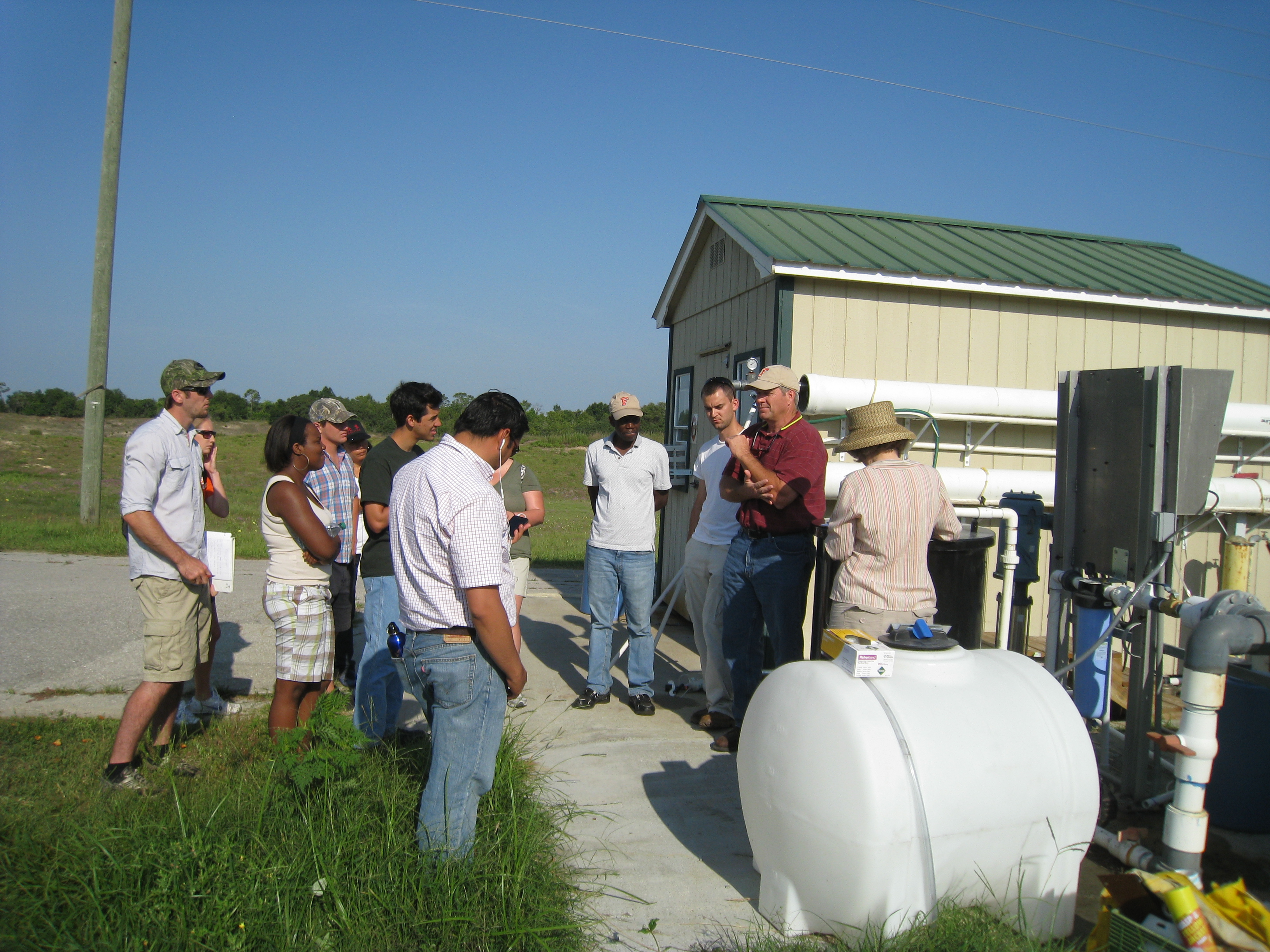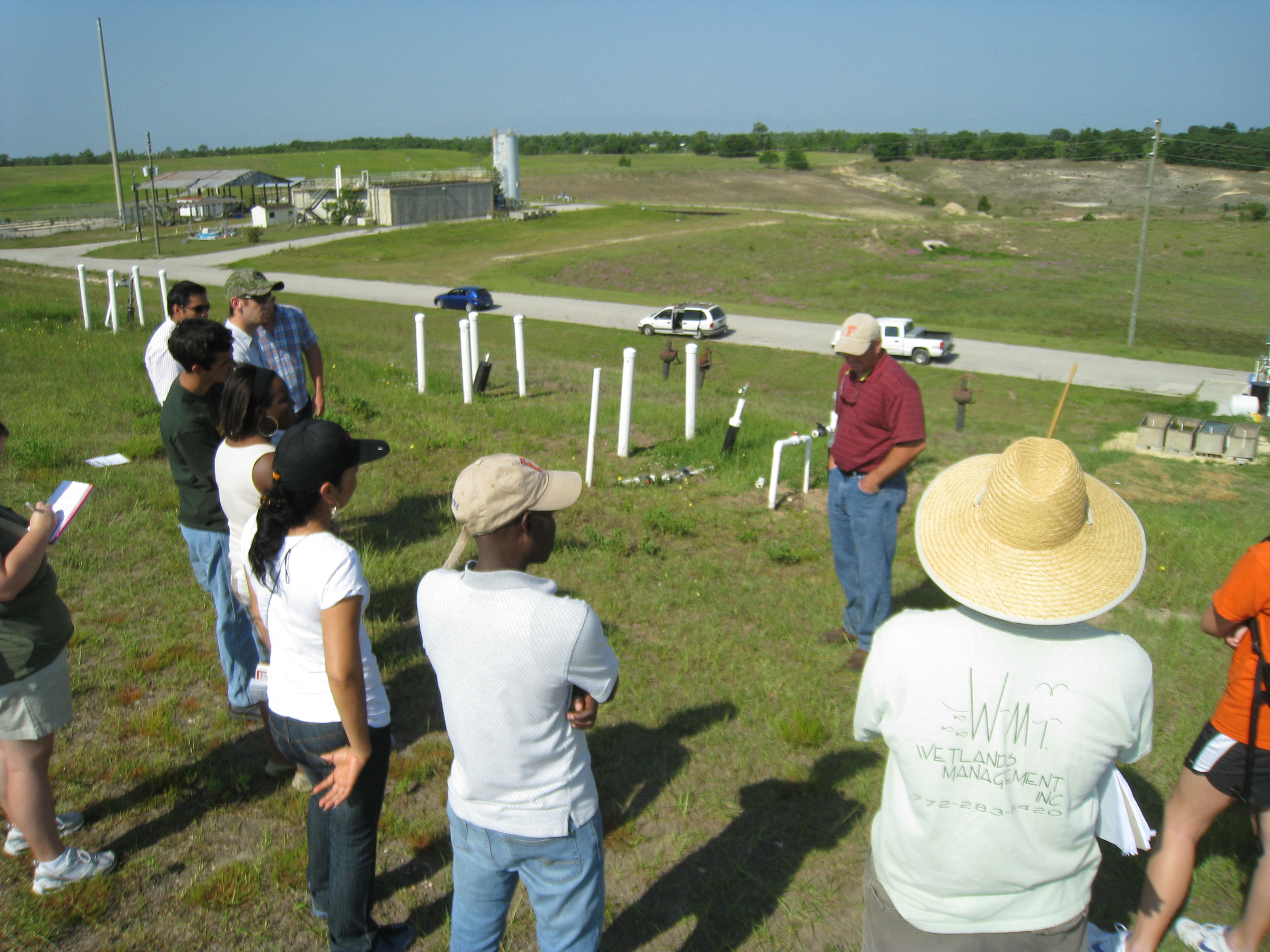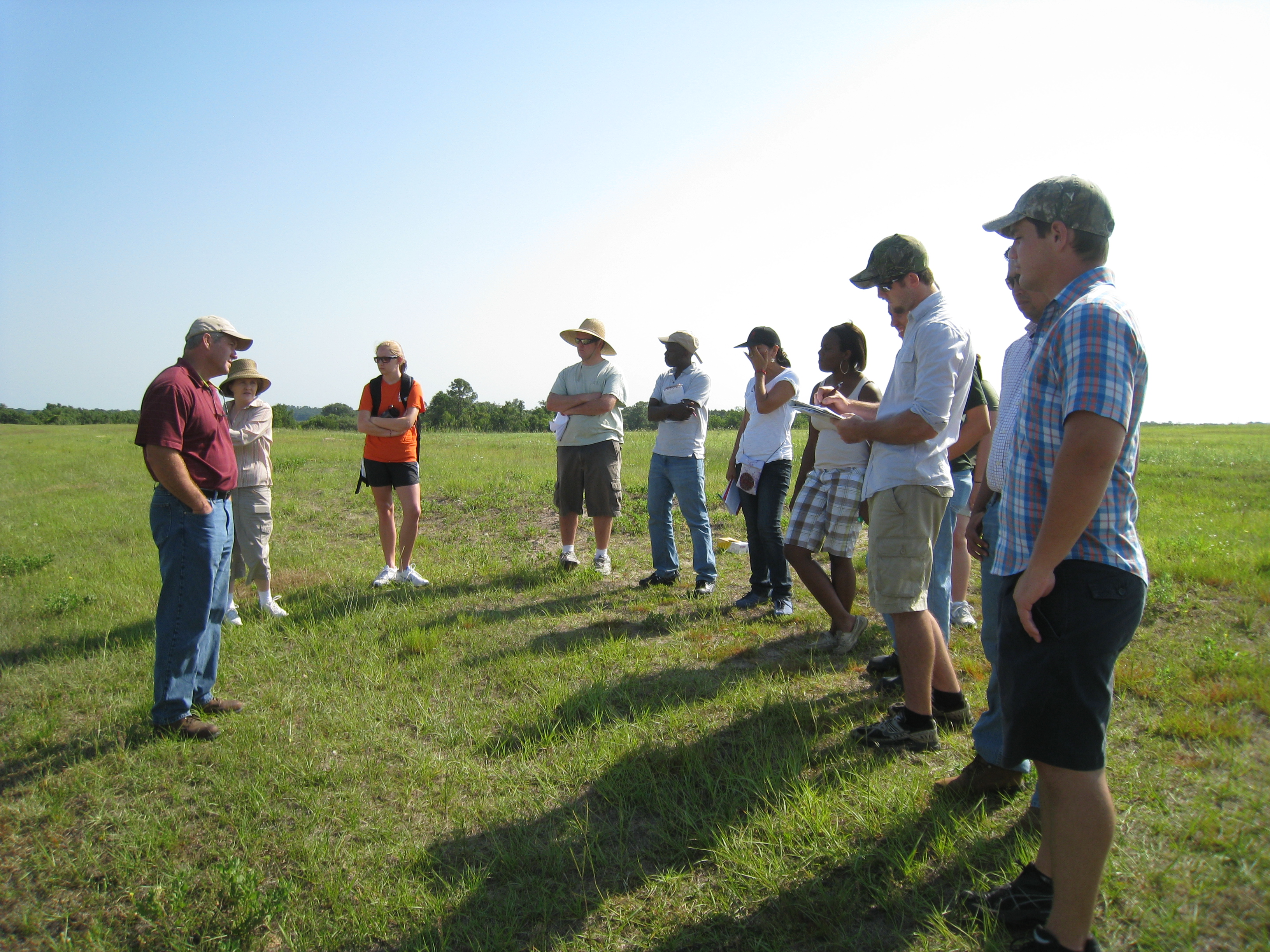Alacua County Southwest Landfill

This semester at BEST lab, we are conducting research at the Southwest Archer landfill, where the goal is to grow algae on permeate filtered out from the thousands of gallons of leachate that flows out the landfill daily. Leachate is the liquid mixture of all the pollutants that are found in a landfill that mixes in with rainwater and various liquids found in the buried trash. At the Archer landfill David Wood is in charge of running a system of filters that is used to clean the leachate to a level where the water is back to a quality that can be used for drinking water or any other uses such as irrigation. Step one in the filtration system is an eight inch filter that the leachate is pumped through and immediately pumped through smaller four inch filters. The problem that Mr. Wood is faced with is the filtration with the eight inch is fairly cheap in comparison to the four inch filters; however, the levels of ammonia is still too high to pass as potable water. Because the four inch filters is far more costly to operate, an alternative approach to remediate this leftover ammonia is being researched. The current idea is to grow algae on the permeate that exits the eight inch filter, and see if the costs for the production of algae is more cost effective than running the four inch filters. The basic theory behind the production of algae over filtration is not only will you clean the permeate, you will also have by-products such as algae oil, feedstock for animal production, and/or a feedstock for anaerobic digestion. However, the main focus at the present is to research and develop a strategy for growing the algae, and see if that alone is more efficient than filtration.

The main 26 acre site opened in 1988, and was completely lined. The last trash was put in in 1998, and since 2001 the landfill has been closed, and leachate has been recycled back into the landfill. Currently the average daily outflow of leachate is 34,000 gallons, 7,000 of which is filtered to permeate, and the remaining is pumped back to the landfill for two reasons: the maximum allowed head of leachate on the bottom liner cannot exceed one foot, and circulation of leachate through the landfill aids in the digestion of the remaining organics. This digestion causes the buildup of methane gas, which when the landfill was running good was releasing a mixture of approximately 45-55% methane gas. This gas is a harmful greenhouse gas that has a much higher global warming potential than carbon dioxide. Because of this, the operators at the landfill flame the methane gas which releases carbon dioxide and water. However, currently the landfill is releasing less methane gas, and the percentage of methane has dropped, increasing the chance of explosion when flamed. So, the flaming of the methane is not continuous from day to day.
The cost of a landfill is a tremendous burden that is still present even with closure. Once a landfill is closed it must be monitored for thirty years. Topographic maps of the surface must be taken to ensure all settlement has occurred, and gas probing to check that no more methane gas is being emitted before the landfill can be closed for good. With these processes and the labor and maintenance included, an initial investment of $6,000,000 is put towards the completion of the thirty year landfill closure system. Not only is this a large sum of money to invest in a landfill that is not being operated, but the leachate that comes out of the landfill if needed to be removed by truck would currently cost over $1,000 per 1,000 gallons.
As a summary a landfill is not only a burden on the environment while in operation, but a problem for a number of years even after it is closed. Some possible solutions would be to continue research on growing algae on permeate to reduce costs involved with cleaning the leachate from the landfill, using the methane gas for power production, and investment in other means to reduce the demand on landfills and for new landfills. For example, Mr. Wood is working on completion of a transfer station that will be a resource where trash will be brought and recyclable goods will be filtered out. This will both reduce the amount of trash that is dumped into landfills and open doors to opportunities for smaller private vendors to take recycled goods and make products that can be sold and reused in today’s economy.
